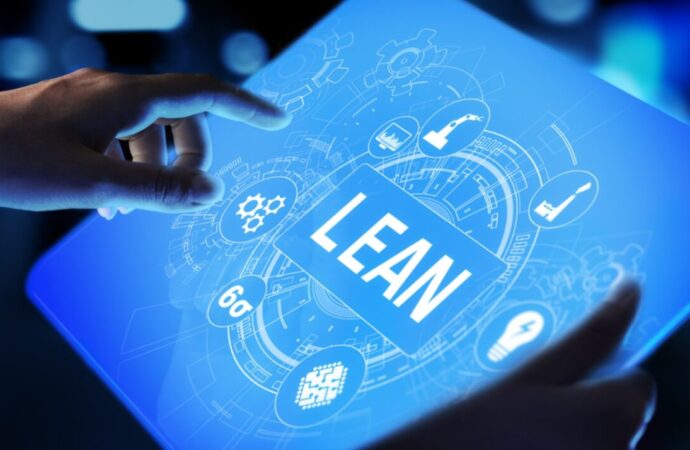Columbus Residents - Learn Lean Six Sigma’s History Here
Contact Us

Lean Six Sigma has been around for more than two decades, which means it is a methodology that, unlike what many believe, isn’t new, and instead, most individuals should be familiar with it at this point. This method has been a valuable addition to any career path as those getting trained not only to add the knowledge regarding LSS to what they know but also develop new skills that are required for many companies throughout the country, boosting their personal growth in the process. It is important to review the history of Lean Six Sigma to ensure you understand how this methodology became a key for every business and individual, which is why we at Lean Six Sigma Curriculum for Columbus High School Students of Ohio get you started with it right here.
Before you rush to obtain training or certification, it is important to do your research. It will allow you to understand the benefits this method has for companies and why you should be considering it for your own or maybe for your personal growth alone.
This method was originally created to help companies prioritize customers and increase efficiency to improve earnings.
The methodology can reduce costs and eliminate waste if used correctly. You can use it to succeed in other areas of life as well since many practitioners have shown that they are able to boost processes in their projects and reduce steps, saving time and money in the process.
This approach accomplishes all of the above and improves customer satisfaction. It also reduces lead time for companies and helps individuals work around continuous growth.
It is secondly based upon the collective knowledge and experiences of all parties. Implementation should only be possible when certified practitioners have been involved. Companies who want it to work should be taught it, not just implemented without providing context or sharing knowledge.
Let’s now focus on the facts: LSS was born from the combination of Lean & 6 Sigma while still adhering to its own principles and adding to the equation.
The Beginning of a World-Changing Method
Before you can implement Sigma’s founding principles and logic in your business or personal life, it is important to understand them fully.
LSS may have its roots in the Japanese industry, or this is what many believed. This is because LSS was developed to compete with the Japanese methodology named Kaizen, which was helping industries and companies in the country to achieve customer satisfaction and improve quality.
It was the reason Japanese industries were able to produce high-quality products that satisfied customers, making them one of the most successful companies in the 80s.
What does this mean for LSS?
LSS was established to help American companies remain competitive and at the top of their game during these years. Lean was first introduced in the 1940s. 6 Sigma dates back to the 1980s; from then, LSS was created a few years after 6 Sigma.
Toyota developed Lean manufacturing in the late 1940s as a way to reduce non-value-adding activities, and it teaches employees that they must be involved in making organizational changes that foster excellence. To ensure happiness and satisfaction, everyone must be able to learn the ways and improve continuously.
Toyota Production Systems (TPS) was the first company to use Lean. This company was founded by Japanese Taiichi Ohno, which is why many believe LSS is Japanese. This same method was used in Henry Ford’s Innovations and Business Process Redesign.
Six Sigma, which is a data-driven methodology, will be the next topic. In its core concept, Six Sigma is distinct from Lean. Motorola developed the method, and General Electric successfully used it in the 1980s.
Six Sigma is a process improvement tool that professionals and experts developed to ensure every process was managed and problems solved.
Six Sigma’s structure is based on the DMAIC option. Define, Measure, Analyze, Improve, Control. This is useful for manufacturing as well as other industries because it allows them to automate their processes and prevents them from slowing down.
Lean Six Sigma: What Is It About?
This was designed to allow American companies to compete with Japanese manufacturers, as mentioned earlier. However, when it comes to defining LSS, the term “combination” and how it has been considered a mix of Lean and Six Sigma does not do justice to the methodology as a whole.
American industries are today at the forefront of innovation, waste reduction, and employee participation, thanks to LSS. They can thrive and remain ahead of the curve because of how they can address issues and focus on the customers.

Sigma is not limited to products and services. New industries and fields have realized this over the past decade.
Schools and educational institutions can create systems that are more efficient and, therefore, easier to use. Students can also learn LSS to help them gain valuable skills and be ahead of their peers when they apply for jobs.
Lean Six Sigma can be a great way for you to get involved in today’s world. The principle of continuous improvement will not change, no matter where it is implemented.
Lean Six Sigma Curriculum Pros of Columbus can assist with certification and training to help you understand and appreciate the beauty of Sigma.
Contact us, and we’ll teach you everything, even more history, so you can have a deeper look at how it works!

